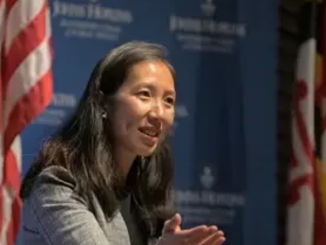
In March, the DHS and DOJ published new rules for asylum claims by illegal border entrants. Overturning decades of practice, those rules allow Citizenship and Immigration Services asylum officers — not immigration judges as in the past — to grant asylum to migrants apprehended at the border. The New York Times has offered its foolishly hopeful take on the new system, which will encourage more migrants to enter illegally and deprive the American people of important protections.
Concerned about illegal entries, Congress amended the immigration laws in 1996 to allow the Department of Homeland Security to quickly remove border migrants without sending them to immigration court. That amendment, however, directed asylum officers to interview entrants requesting asylum to determine whether they had a “credible fear” of persecution, essentially a screen to weed out truly bogus claims.
The credible fear standard is low, and migrants who cleared it (as 83% did between Fiscal Year 2008 and the fourth quarter of FY 2019, according to Department of Justice statistics) were placed into removal proceedings to seek asylum from an immigration judge. The federal government is represented in those proceedings by ICE attorneys, who can challenge the migrants’ claims and offer contradictory evidence.
Under that system, both the migrant and the government can appeal the judge’s decision to the Board of Immigration Appeals, ensuring the interests of the migrant and the American people are protected.
The DHS and DOJ proposed amending that system in August 2021 to allow the asylum officers themselves to grant asylum to migrants who passed credible fear. If denied, the applicant could appeal that decision in a modified version of the old system to an immigration judge, and if the court denied as well, to the BIA, giving him or her an additional “bite at the apple.”
Proposal breaks law
My organization and others submitted lengthy comments explaining that this proposal violated the immigration laws and would also encourage more illegal immigration.
Among our concerns was the proposal would allow asylum officers to grant asylum — placing the migrant on a path to citizenship — following a “nonadversarial hearing,” at which the asylum seeker could be represented by counsel, but the American people wouldn’t. That means no cross-examination, no impeachment evidence, and no appeal if the asylum officer got it wrong.
Simply put, the proposed system would offer more protections to illegal entrants, while removing safeguards protecting US interests.
Despite those concerns, the departments adopted the plan in March, and the Times reports that 99 migrants have been processed under the new rules. It quotes DHS Secretary Alejandro Mayorkas, who contends “about a quarter” of those people were granted asylum, “similar to the percentage” under the immigration-judge system.
Border agents process immigrants seeking asylum in the US after crossing into Arizona from Mexico on September 26.
John Moore/Getty Images
It doesn’t appear the Times pressed Mayorkas on this claim, which is both vague and erroneous. Under the DOJ statistics cited above, fewer than 17 percent of the border crossers who passed credible fear in the past were granted asylum by immigration judges — meaning asylum officer grants are “about” 50 percent higher, reflecting the safeguards in the older system.
What’s more, the people who were denied by asylum officers now get to start all over in immigration court, where judges will have to rely not on formal asylum applications (as under the old system), but on the officers’ notes, the interview transcript, and any evidence the applicant offered.
While Immigration and Customs Enforcement can also offer evidence and cross-examine the migrant in that removal hearing, under Biden administration policy, there’s no longer a guarantee the agency will even send an attorney. That’s also a significant departure from practice under every prior administration, stripping the American people of representation.
Encourages fraud
Immigrants seeking asylum wait to be processed in Arizona on September 26.
John Moore/Getty Images
As both a trial attorney for the former Immigration and Naturalization Service and an immigration judge, I can state dispositively that this new system will encourage fraud, boost the number of erroneous grants, and encourage more migrants to enter illegally to game this new and poorly thought-out system.
mmigration judges are lawyers who must have at least seven years of experience. Before I was appointed, I had argued thousands of cases, advised the attorney general, and written provisions in the asylum laws.
As the Times notes, however, “Asylum officers do not need a law degree but must, among other things, participate in a five-week basic training course.” With due respect, that’s not a foundation for success when citizenship is the ultimate prize.
Incredibly, however, the Times fails to challenge Mayorkas’ claim that the new system “could reduce the incentive for migrants to trek to the border in the first place because they would know their case would be decided swiftly.” While it “could,” it almost definitely won’t.
Even under the new rules, the Times admits, “the challenge of how to quickly deport those denied asylum will remain.” Tackling that challenge and securing the Southwest border, where more than 2 million illegal entrants have been apprehended and a half million others have evaded Border Patrol this fiscal year alone, should have taken precedence over providing more rights to illegal entrants. But that’s not where the president’s priorities are.
* Article from: The New York Post


